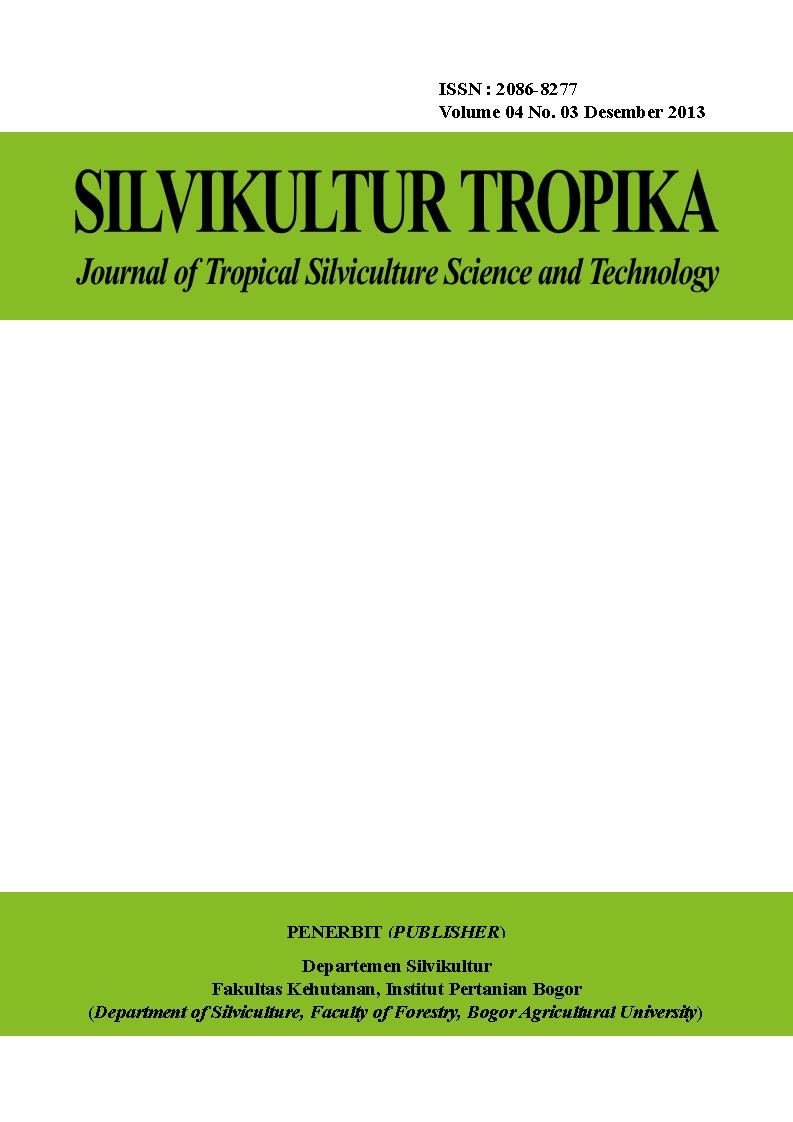Growth of Samama (Anthoccephalus macrophyllus (Roxb.) Havil) Seedling Co- planted with Cover Crops
Abstract
Open area due to mining activities could cause erosion and sedimentation. Planting cover crops has been a standard practice to reduce erosion and it is part of mine reclamation steps. Cover crops commonly used, such as Pueraria javanica, Calopogonium muconoides, and Centrosema pubescens could not grow well on acidic soil and they strangle tree seedlings co-planted with crops. Therefore, they need high input, such as liming, compost and fertilizer application, and high cost for maintenance. Alternative cover crop non-strangling species that could survive on acid soil is needed. Arachis pintoi, Desmodium heterophyllum and Paspalum conjugatum species could be alternative species for cover crop, but they do not produce sufficient seeds for a large scale planting. They could only be propagated using cutting of stems of stolone. Co-planting of the plants with tree seedling in the same polybag would be one alternative to transplant the plants to the field without additional cost. However, a study should be conducted to observe the effect of co-planting on the growth of the tree seedlings. The aim of the study was to obtain information on effect of cover crops species on the growth of samama (Anthocephalus macrophyllus), and the growth rates of different cover crop species that was co-planted with the samama seedlings. The results showed that all cover crops species did not significantly reduce the growth of samama seedlings. All cover crop species has a potential for cover crops, but Desmodium heterophyllum has the highest survival, growth, and branch production compared to other species.
Keywords: Anthocephalus, Arachis pintoi, cover crops, Desmodium heterophyllum, Paspalum conjugatum










